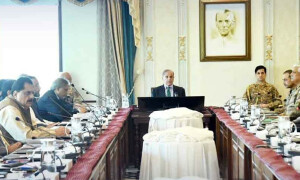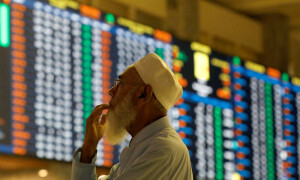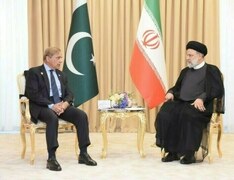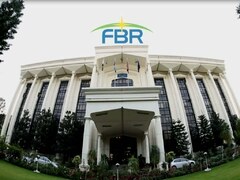Tobacco is harmful, whatever the form it has, and there is no protected use of tobacco experience. Cigarette smoking is the most common form of tobacco use elsewhere. Other tobacco products include waterpipe tobacco, various smokeless tobacco products, cigars, biri, pipe tobacco, sheesha, naswar, gutka, mainpuri, etc.
More than 80% of the tobacco use burden remains in low- and middle-income countries, including Pakistan, resulting in tobacco-related health diseases and mortality. Tobacco use further aggravates poverty by switching domestic spending from essential commodities such as food and shelter to tobacco. Recent studies in Pakistan identify that the health cost of tobacco-related diseases is 615 billion Rupees annually, and 75 percent of such expenses are out-of-pocket expenses as a societal expenditure.
Pakistan is the thirty-third largest country in terms of area and fifth-most populous with over 210 million. The country has a massive reservoir of young people, with 64% of the population below 29 and 30% between 15 and 29 years. According to the World Bank's statistics, Pakistan is among Asia's five fastest emerging economies, registering a growth rate of over 5.7% in 2017, which is projected to continue.
Like other countries, Pakistan also faces significant challenges, and effective tobacco control is one of those challenges. Pakistan is one of the largest tobacco-consuming countries in the world. Tobacco is consumed in many forms, including smoking cigarettes, water pipe (hookah/shisha), chewing paan, gutka, and naswar. However, cigarettes account for most of the smoked tobacco consumption.
Taxation is known to be the most cost-effective tobacco control measure available to governments throughout the world. However, tobacco use generates a substantial economic obligation on the population at large. High direct health costs associated with tobacco-related disease and higher indirect costs related to premature loss of life, disability due to tobacco-related illness, and productivity losses create significant negative externalities of tobacco use.
Efficient tobacco taxes reduce these externalities through reduced consumption and prevalence and contribute to lowering governments' expenditures for the health care costs associated with tobacco consumption. Tax and price policies are extensively acknowledged to be one of the most effective means of influencing the demand for and consuming tobacco products. Consequently, implementation of Article 6 of the WHO (World Health Organisation) FCTC is an indispensable element of tobacco-control policies and, thereby, efforts to improve public health. Tobacco taxes should be implemented as part of a comprehensive tobacco-control strategy in line with other articles of the WHO FCTC.
In 2016, Pakistan was the 8th largest tobacco-growing country globally and produced about 116,016 tons of tobacco. There is no provision in current law for estimating and monitoring the contents of cigarettes and no available laboratory in-country. Cigarettes contain significant tar and nicotine levels; therefore, their users have a very high risk of developing diseases related to tobacco use.
The tobacco industry has always portrayed high figures of illicit trade (as it is a global phenomenon) to strengthen their business against tobacco control legislation, enforcement of laws, etc. In May 2017, Pakistan had reduced tobacco taxation by 50% and introduced the 3rd tier, arguing for an increased scale of illicit trade; the regime has been controversial since the start. (Read 'Illicit cigarettes: a smokescreen?' published April 13, 2018). However, the tobacco industry welcomed its commencement on grounds that it would help to fight 'illicit' trade and eventually turned around their fortunes. (Read 'Big tobacco wins, again,' published May 2, 2018). With the introduction of 3rd tier of tobacco taxation in Pakistan, the prices of cigarettes dropped, and consumption increased. As a result, cigarette production was hitting through the roof in FY 18, accompanying a tax loss of over Rs 30 billion amid cigarettes becoming cheaper by over 20 percent in real terms.
These trends prompted independent studies to assess the volume of illicit trade in Pakistan. A research study (Economics of Tobacco Taxation and consumption) - commissioned by the Pakistan Institute of Development Economics (PIDE) at the 34th Annual General Meeting reported that the estimated loss of tax revenue due to three-tier FED structure (along with a reduction in the tax rate) was Rs 42.5 billion in 2017-2018. PIDE study analysis also shows that a 10% increase in price will lead to an 11% reduction in cigarette consumption, translating into annual savings of Rs 16 billion.
PIDE further elaborates that backtracking to a two-tier tax system with higher FED as suggested will raise the average cigarette pack price; reduce smoking prevalence among current and future smokers by 2.6 million individuals, and avert almost one million premature deaths as a result. Those health outcomes are more than double what can be achieved from the existing three-tiered system.
Another study conducted by Pakistan National Heart Association and Human Development Foundation and a report launched on April 5, 2018 has come up with a finding that the volume of illicit trade is recorded at 9%. That study used the retail data only for the selection of its study locale. But it conducted a very robust sample collection on its own.
The illicit trade of cigarettes is a global phenomenon. All countries, be they developed, developing, or in transition, suffer its negative consequences. In the Protocol to Eliminate Illicit Trade in Tobacco Products, the World Health Organization (WHO) defines illicit trade as:
"Any practice or conduct prohibited by law and which relates to production, shipment, receipt, possession, distribution, sale or purchase, including any practice or conduct intended to facilitate such activity." (Article 1.6; WHO, 2012). Illicit trade can be undertaken both by illicit players who are not registered with relevant government agencies and legitimate entities whose business operations are contrary to applicable laws and regulations. (Confronting Illicit Tobacco Trade: A Global Review of Country Experiences; World Bank Report).
In Pakistan, there is no exact or authentic estimate of the illicit tobacco trade. Most of the data provided by the tobacco industry is often exaggerated to benefit favorable taxation and legislation. However, independent studies have constantly challenged such high figures.
Many research studies conducted in Pakistan reveal eye-opening facts about how the tobacco industry manipulated fake statistics to exert pressure on successive governments and resist tobacco taxation reforms and, most of the time, successfully averting raise in taxes.
The irony is that the tobacco industry makes a minimal contribution to the Pakistani economy. Despite being one of the largest tobacco-growing countries, unmanufactured tobacco production accounts for less than half percent (0.42) of the total value of agricultural produce, 0.25% of the total area under cultivation, and only 0.03% agricultural employment (8,200 persons). Similarly, the cigarette industry's share is 1.1% in large-scale manufacturing and less than a half percent (only 0.3%) in industrial employment.
Tobacco Industry keeps on arguing that high taxation on tobacco products makes them expensive, so smokers are tempted to buy smuggled, counterfeit, and non-custom paid cigarettes. Thus, it increases the rate of illicit trade of cigarettes. Tobacco industry also claims the share of the illegal trade of cigarettes in Pakistan reached 37.6% in 2020. In March 2021, tobacco industry was claiming a Rs 44 billion annual loss due to the illicit trade of cigarettes in Pakistan. Now within three months, however, they are claiming that this figure has swelled by 75% with new statistics of Rs 77 billion loss.
To sell such fake figures, they heavily and aggressively promote this exaggerated statistics through mass media campaigns to dissuade the successive governments from increasing tobacco taxation in upcoming budgets.
Increases in tobacco taxes decrease tobacco use. Indeed, raising taxes on tobacco and increasing its price is one of the most effective ways to reduce tobacco use. Increased consumption also puts the burden on the national treasury through increased spending on health. In addition, there is a strong relationship between cigarettes' illicit trade, governance, illegitimate business, money laundering & terrorism financing.
The government should fully implement the WHO Framework Convention on Tobacco Control and its Protocol to Eliminate Illicit Trade in Tobacco Products. The Protocol features several valuable action points, including Article 10.1.b, which notes that Parties shall "take the necessary measures" so that companies "[supply] tobacco products or manufacturing equipment in amounts commensurate with the demand for such products. Within the intended market of retail sale or use." Given the complexity of the issue, countries need to take comprehensive action with a view to ensuring that illicit tobacco does not counter the governments' efforts aimed at curbing smoking. A rigorous multi-pronged approach is required in this regard.
Pakistan applies a specific excise tax system to cigarettes with two price tiers: low and premium. The excise tax rate on economic and premium brands is 42.6 and 59.8 percent of the printed retail price, respectively, resulting in a significant excise tax gap between the two tiers. Due to the large share of low-taxed cigarettes in the total consumption, the average excise tax share is 45.4 percent of the retail price, much lower than the WHO recommendation that excise tax is at least 70% of the retail price. Hence, the government should seriously consider following the recommendations of World Bank and the WHO and enhancing tobacco taxes, which are currently stagnant at the level of 2017 taxes.
(The writer is a physician, public health consultant and former Director of Pakistan's Tobacco Control Cell. He now works as a Communication Consultant with various organizations to improve communications strategies around tobacco control and policy change, and is supporting Voices Against Tobacco, an initiative by Indus Hospital & Health Network to create a dialogue about the need for meaningful change to improve tobacco control measures in Pakistan)
Copyright Business Recorder, 2021


























Comments
Comments are closed.